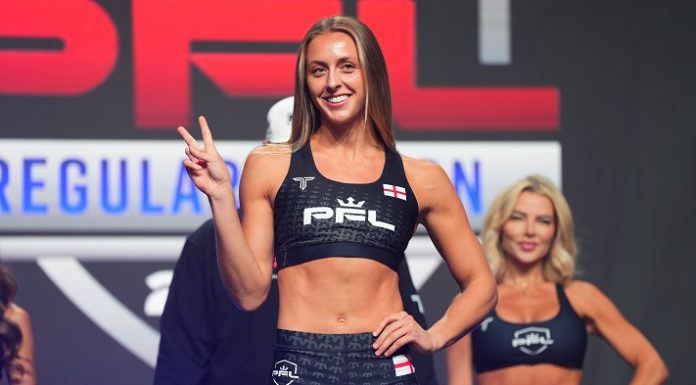
Amanda Nunes’s dominant reign as a two-weight champion has shown that maybe having multiple women’s weight classes might not have been the greatest idea.
Back in 2016 when Amanda Nunes defeated Miesha Tate to win the bantamweight title, she had a bunch of contenders at her heel. The division was seeing its fourth champion in less than 10 months and one of the biggest stars of the sport, Ronda Rousey, was still at large in the division. The 135lb weight class might not have been stacked but it clearly didn’t lack contenders. Four years later the division looks deserted with no credible challengers in line.
Right after defeating Rousey, Nunes was expected to face the Valentina Shevchenko, who was coming off a huge win over Juliana Pena. The fight saw Nunes win a very close and disputed decision. Now, this win came around the time when the featherweight division was created, which took away fighters like Germaine De Randamie and Holly Holm to a weight class above. Albeit temporarily.
Which left only one fighter, Raquel Pennington, who was injured, as a true contender. Which resulted in inactivity for the champion. The division had a strong future contender in Ketlen Viera but she wasn’t there just yet. In the meantime, Cris Cyborg started a campaign to face Nunes. One thing led to another and by the end of 2018, Amanda Nunes was a two-weight champion.
It was around this time when people began to notice that Amanda Nunes lacked credible challengers. The key fighters in the division had already lost to her. The ones who hadn’t lacked a credible streak to fight for the belt. Two fighters, namely Germaine De Randamie and Ketlen Viera, wound up with credible records but both were out of action due to injury. The vacuum, in turn, was occupied by Holly Holm, who got her third title shot in three years. Name value trumped wins and losses.
Within four years, the bantamweight division had been hollowed out, the end result an empty shell. Since the establishment of the flyweight division, fighters from bantamweight moved down. Among the prominent names are Jessica Eye, Alexis Davis, Lauren Murphy, Katlyn Chookigian and division champion Valentina Shevchenko. The featherweight division, which sounded like a good idea when launched, is practically dead. The 145lb weight class is less a division than a talking point, a way to push a star or two and an extra title to top cards. As long as Nunes is around and holds the belt there, the division will stay intact — double champs are marketable, after all — but there has been very little investment made at featherweight.
A season of The Ultimate Fighter featuring women’s featherweights that produced exactly zero of them notwithstanding.
With Bellator and ONE Championship both having their own respectable women’s divisions with a dedicated set of fighters, it’s very clear that there aren’t enough athletes to fill the UFC’s ranks at the moment. The end result is a situation like UFC 250, where a talented young fighter like Felicia Spencer is rushed to a title shot against Nunes due to a lack of options.
What to do about it, however, is a bigger puzzle.





















